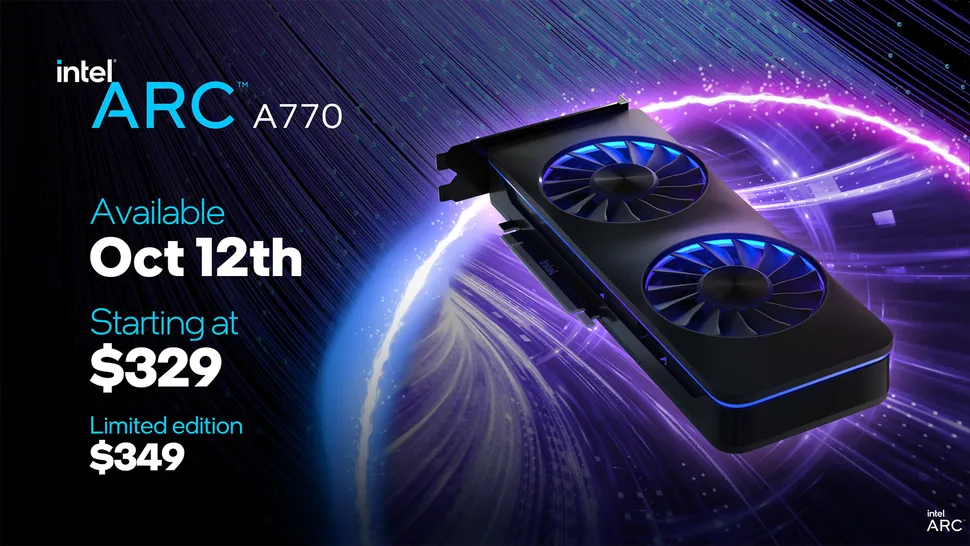Intel Arc:
Architecture:





INTEL ARC GAMING:
Laptops:


INTEL ARC DESKTOP GPU'S


FEATURES:

PERFORMANCE:


Reference CARDS:

Custom AIB cards:

PRICE:
A770 - $329/$349 (8GB/16GB)
A750- $289
Release date: October 12th

Architecture:
Xe HPG
Intel’s Arc chips rely on some proprietary concepts
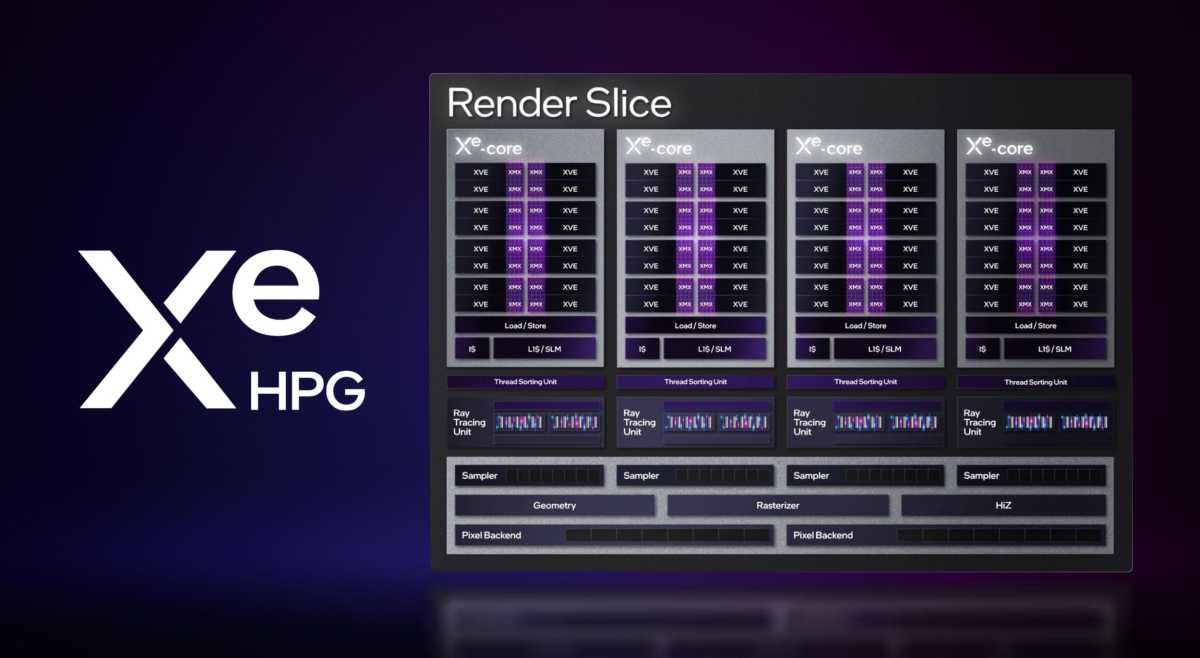
at their heart, containing dedicated ray tracing units, rasterizers, geometry blocks, and the fundamental building block for Arc, the Xe Cores themselves. Xe XPG can scale all the way up to eight render slices in Arc mobile GPUs, represented by the flagship Arc A770M GPU in laptop form.
Each render slice contains four Xe cores and four ray tracing units, along with all the other bits necessary for running a modern GPU. These render slices are fully DirectX 12 Ultimate compliant, meaning Intel’s Arc GPUs can handle ray tracing, Variable Rate Shading, Mesh Shading, and all the other features associated with that standard.
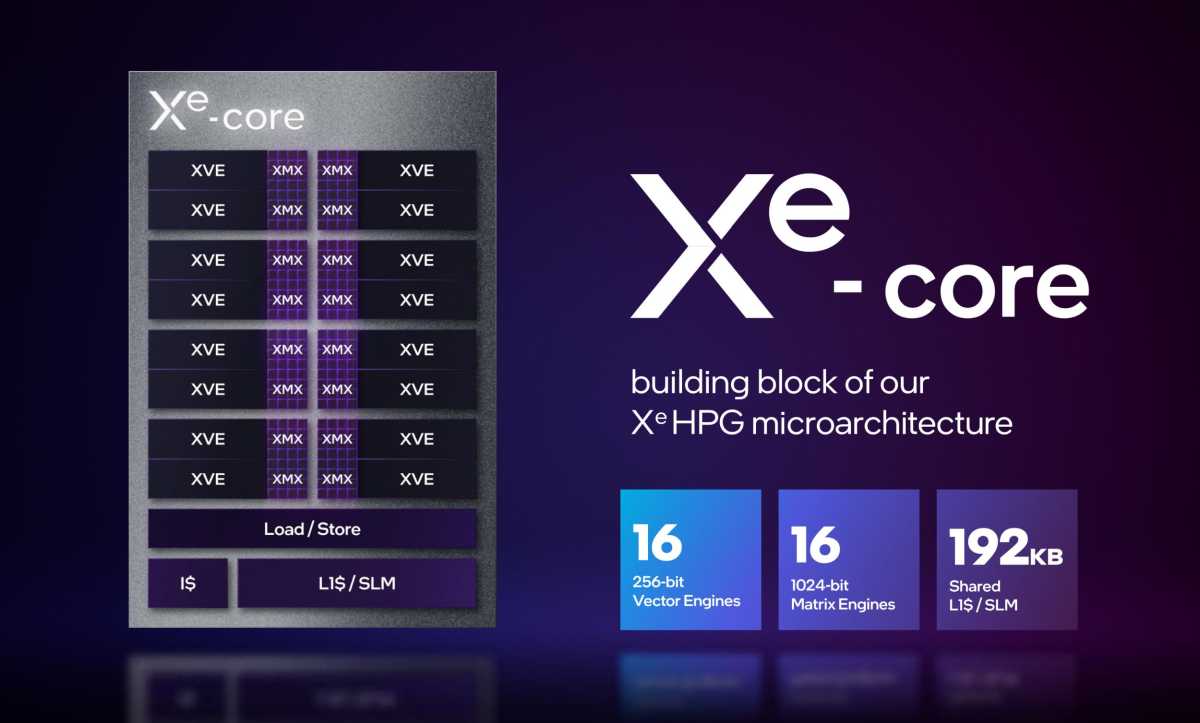
Each Xe core (again, there are four per render slice) is comprised of three key bits: 16 256-bit “XVE” vector engines that handle more traditional rasterization tasks, 16 1024-bit “XMX” matrix engines that handle machine learning tasks (like the tensor cores in Nvidia’s rival RTX GPUs), and 192KB of shared L1/SLM cache. That cache can be used to hold tasks during compute workloads, or shaders and textures while gaming.
Each Xe Vector Engine includes a dedicated floating point (FP) execution port to handle traditional shading tasks, along with a shared INT/EM port that can tackle integer-based tasks at the same time.
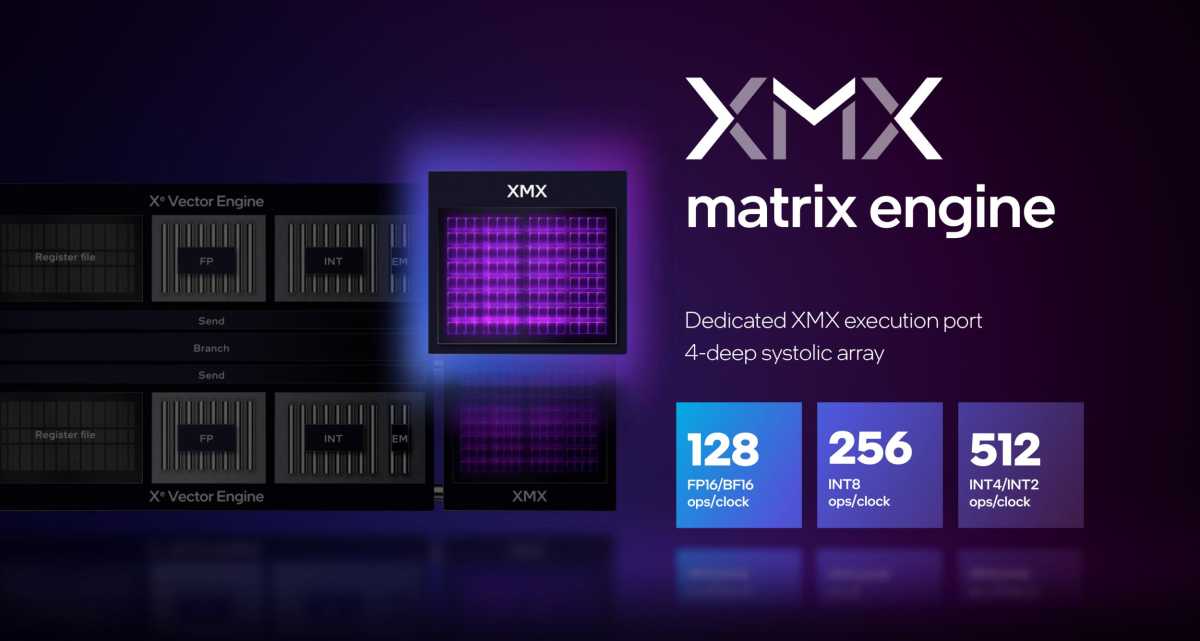

When tapped by compatible software (such as a game with XeSS or an app that supports Hyper Compute), the XMX core’s 4-deep systolic array can calculate up to 256 multiply accumulate (MAC) operations per clock for INT8 inferencing, a massive increase over the 64 ops/clock offered by modern GPUs with DP4a hardware on board, and the 16 ops/clock supported by older GPUs.
Intel’s XeSS supports a fallback mode to run on rival Nvidia and AMD graphics cards that lack XMX cores, defaulting to DP4a hardware instead. This picture illustrates very well why Intel expects XeSS to run much, much faster on Arc GPUs with XMX hardware inside.

Each Xe Core features 16 total Vector and Matrix engines, with pairs of each running in lockstep, able to run FP, INT, and XMX tasks all at the same time. Arc GPUs can be kept very, very busy indeed.
INTEL ARC GAMING:
Laptops:
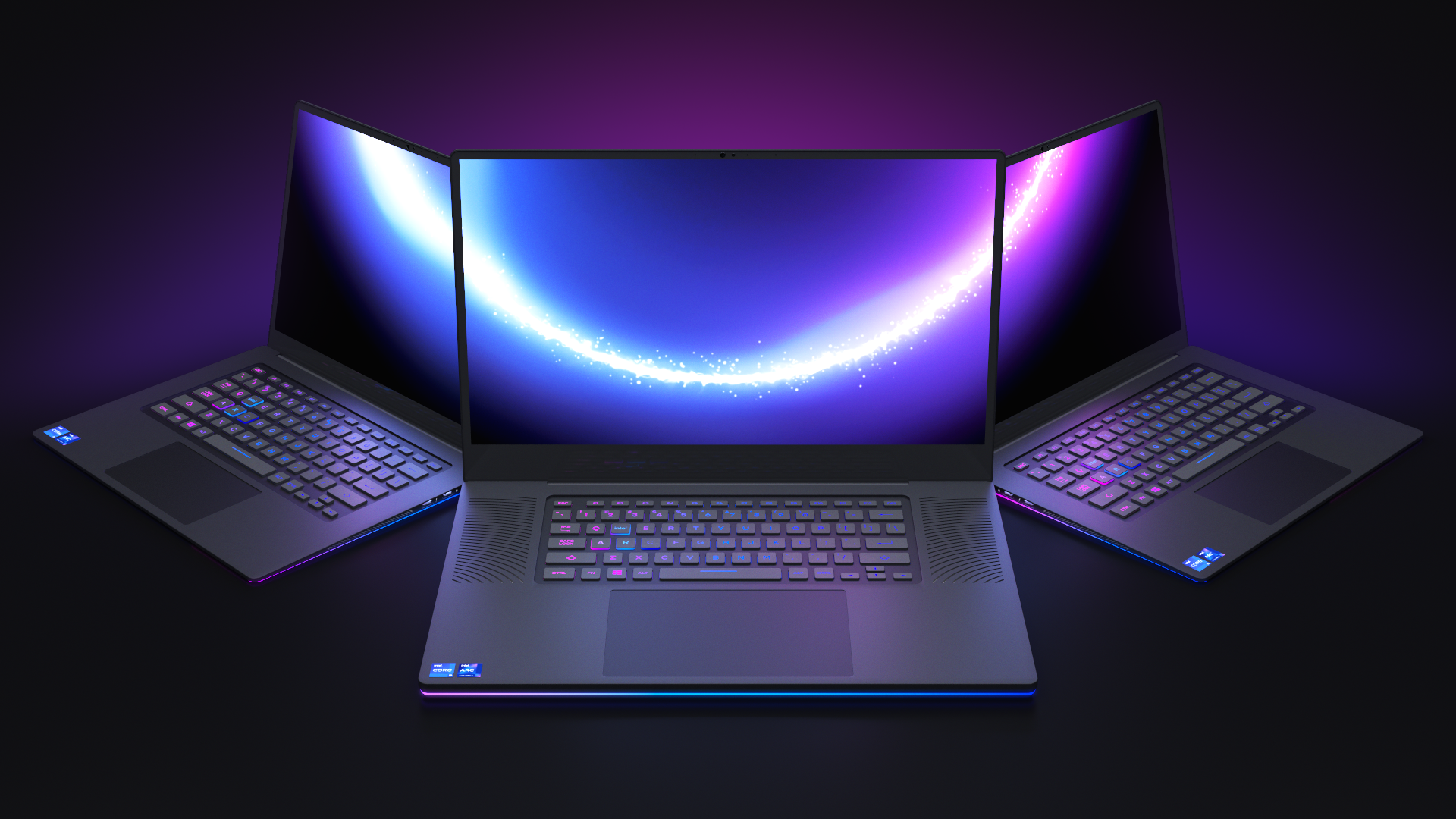

Xe HPG graphics clock speeds
Something might have jumped out at you in those laptop GPU spec charts: their ultra-low clock speeds. In an era where Nvidia’s GPUs push 2GHz and some AMD GPUs clear 2.5GHz, seeing
Intel’s Arc topping out at 1650MHz and going as low as 900MHz is a tad eye-raising. Clock speeds between rival graphics brands aren’t as clear cut as they seem, however.
INTEL ARC DESKTOP GPU'S
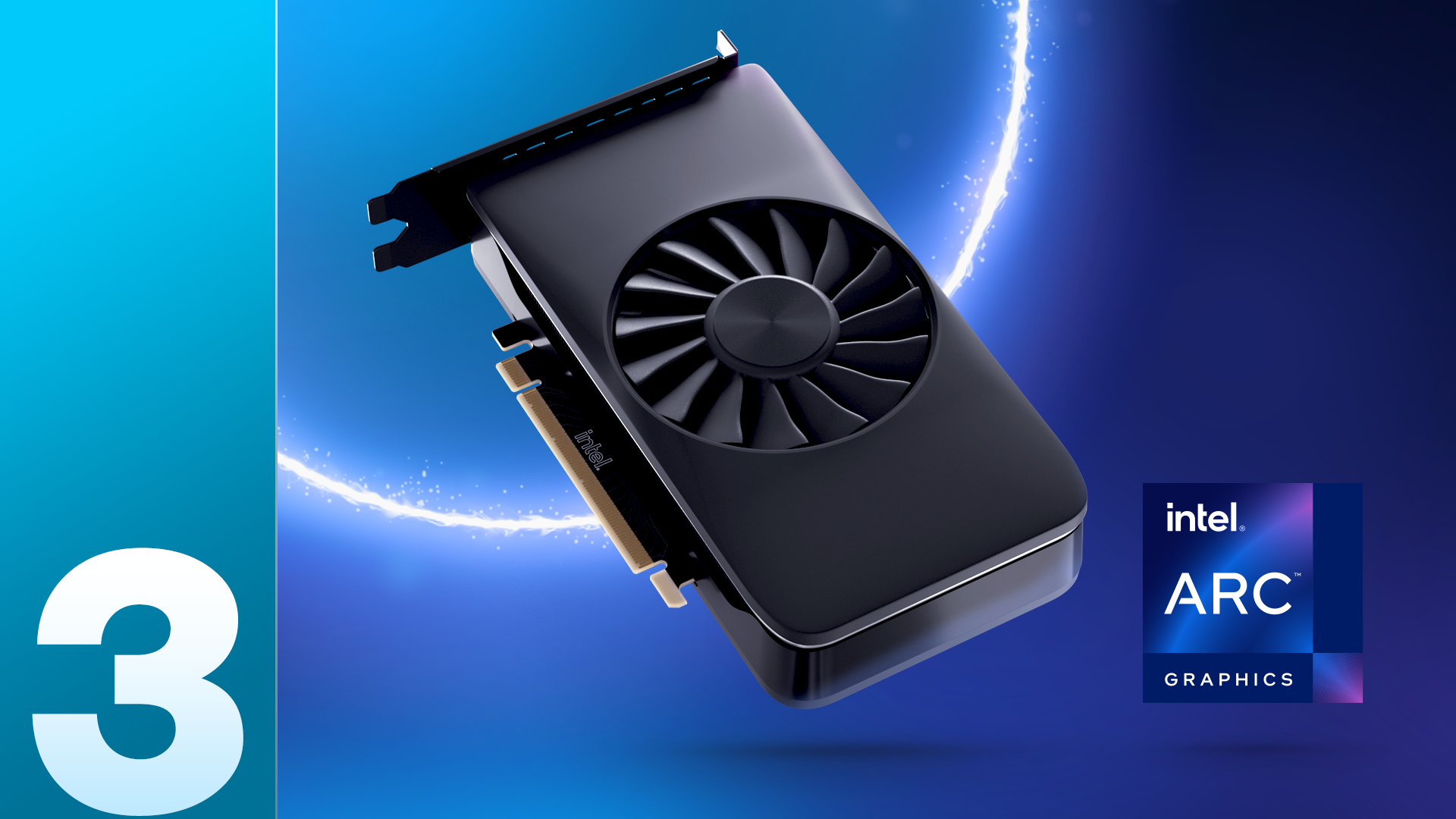
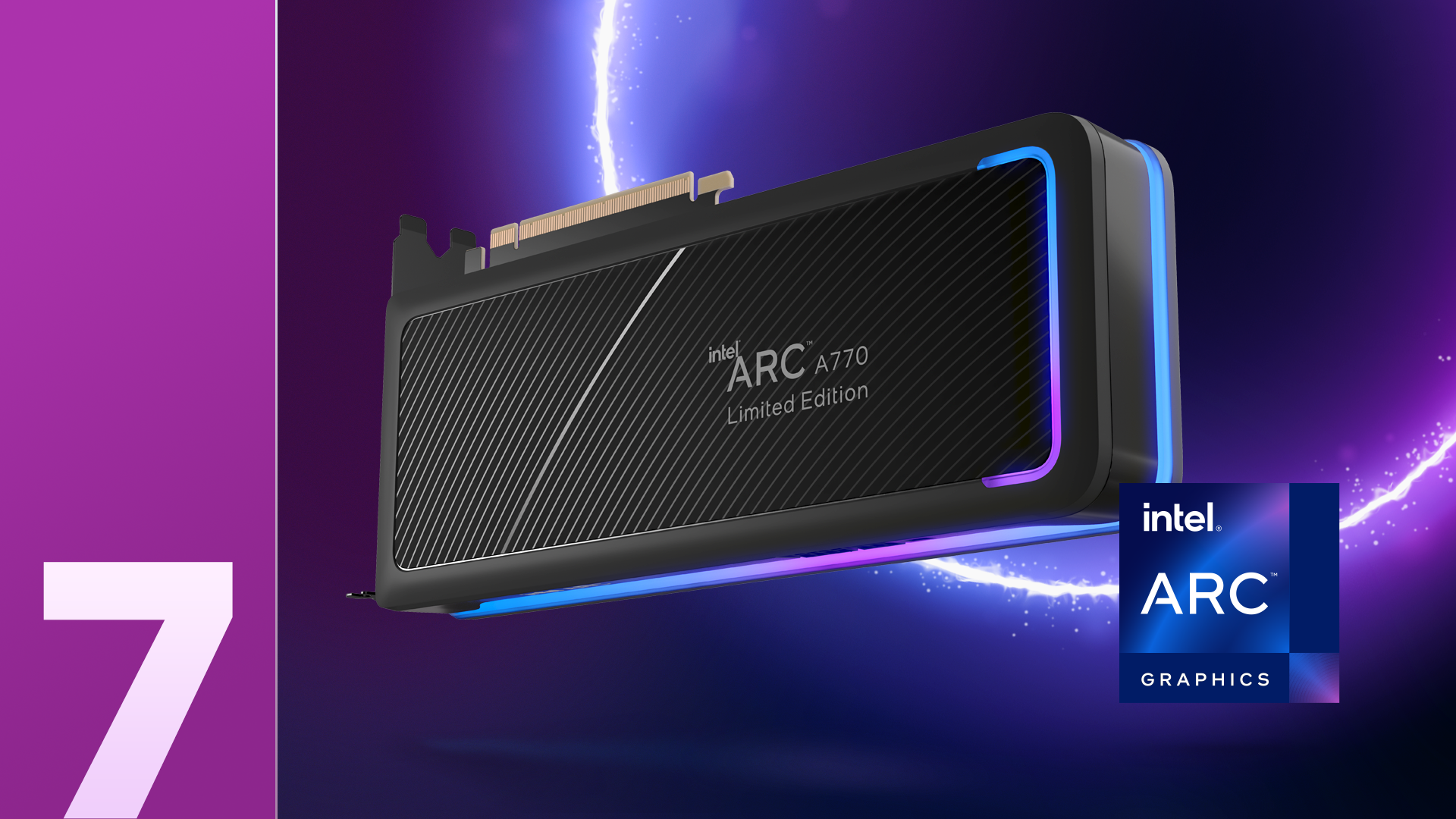
FEATURES:
Xᵉ Super Sampling: AI-Enhanced Upscaling
DirectX* 12 Ultimate
Low Power Usage

PERFORMANCE:
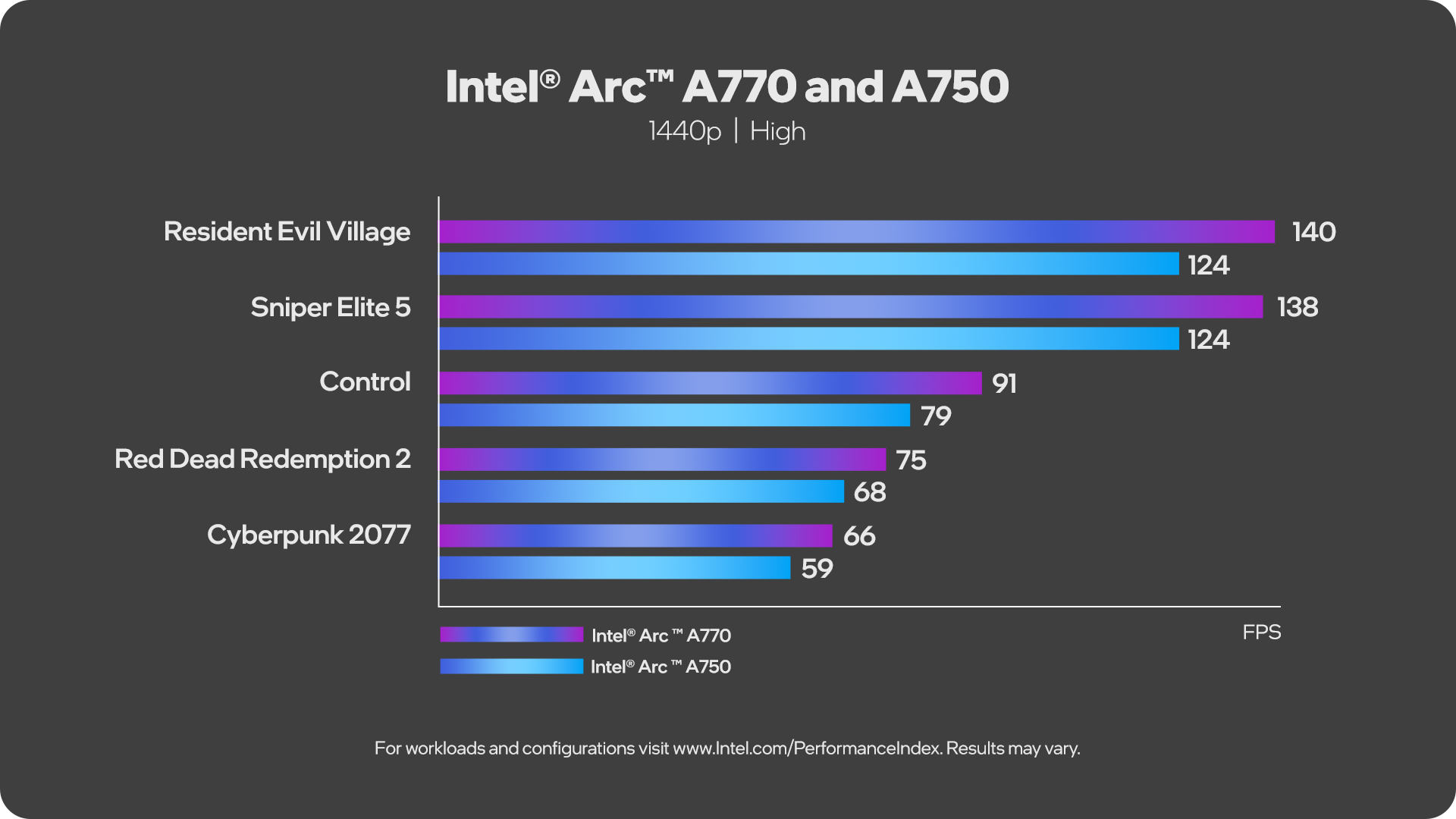
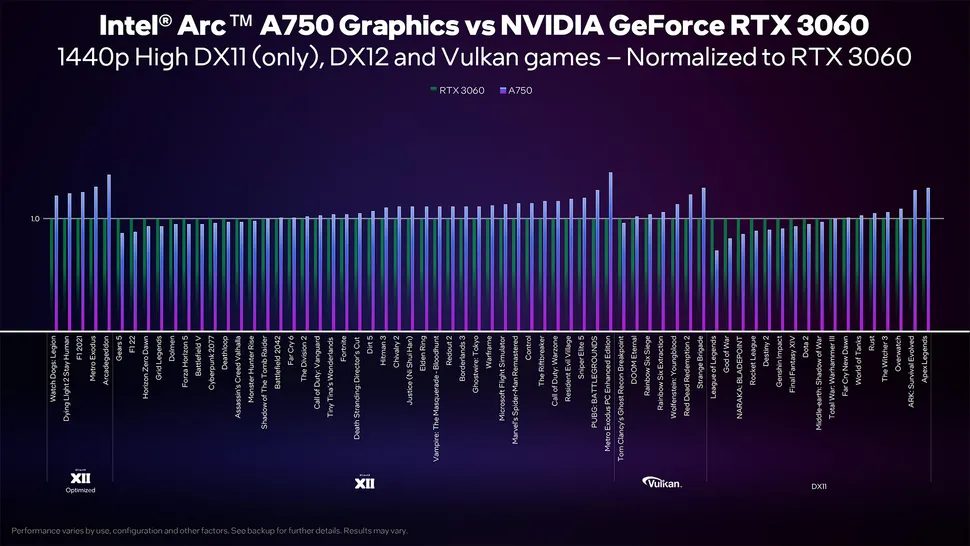
Reference CARDS:

Custom AIB cards:
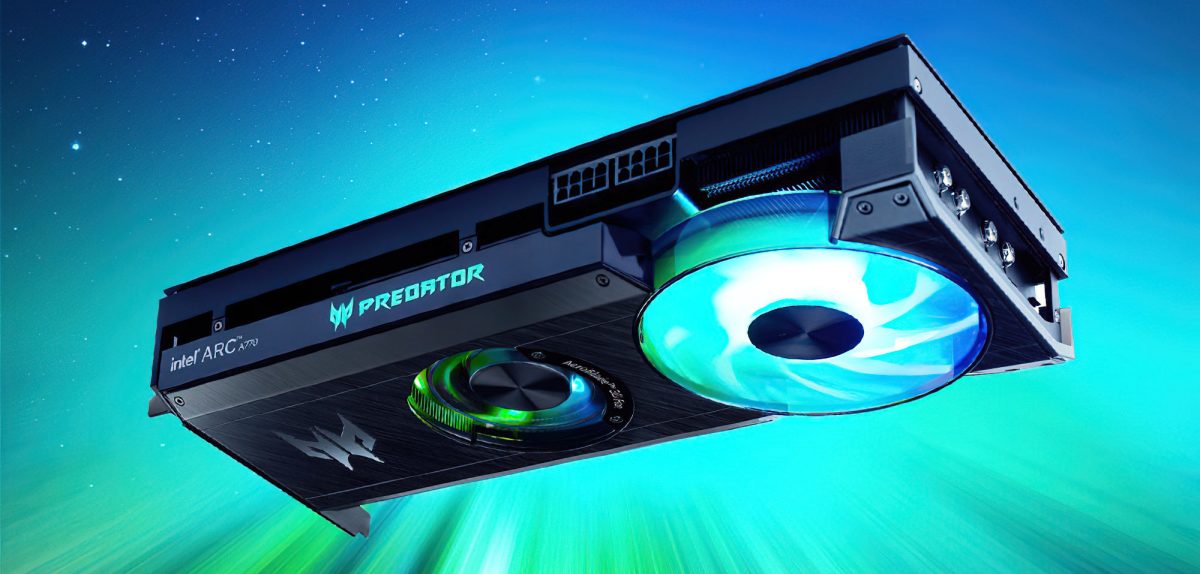
PRICE:
A770 - $329/$349 (8GB/16GB)
A750- $289
Release date: October 12th
